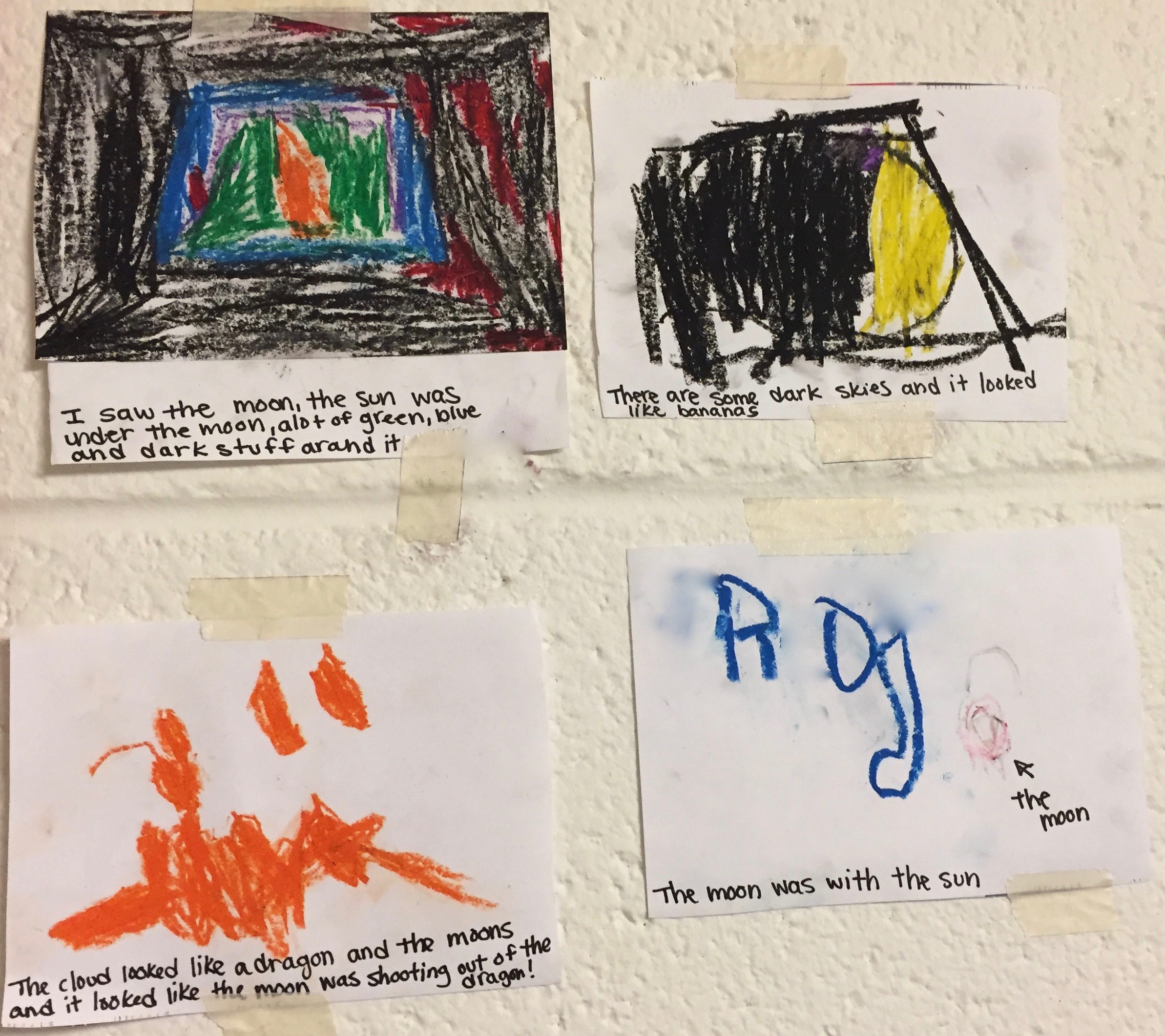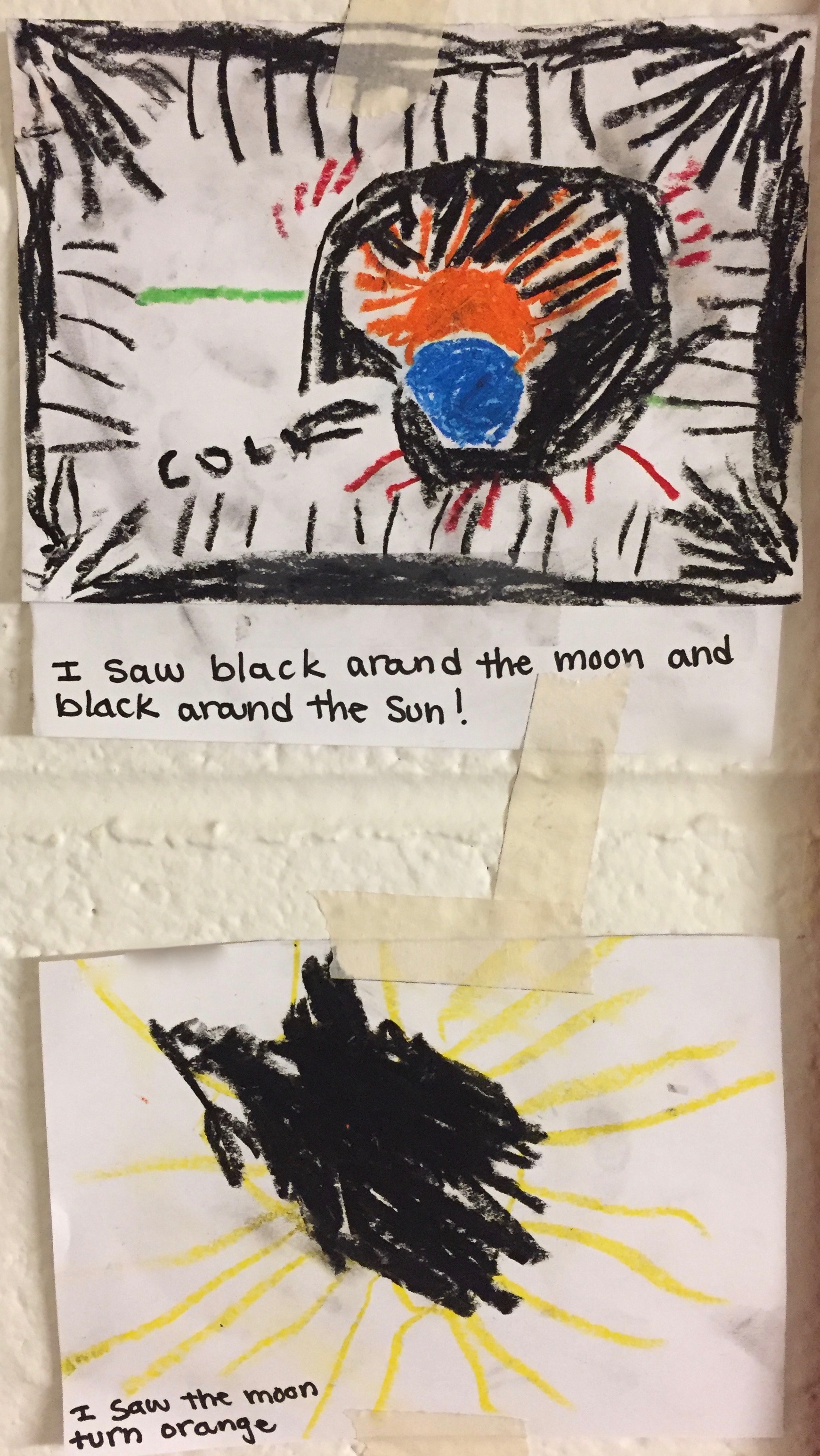Both effective and engaging, Toward High School Biology
Both effective and engaging, Toward High School Biology
Toward High School Biology: A New Curriculum for Your Middle School Students
By Carole Hayward
Posted on 2017-09-29
Would you like to challenge your middle school students to explain a range of phenomena—from how nylon thread can form from two clear, colorless liquids to how a snake that eats only eggs can make body structures that don’t look anything like an egg? Would your students enjoy building molecular models with Legos to understand how an herbicide prevents weeds from growing? If so, then Toward High School Biology: Understanding Growth in Living Things by AAAS/Project 2061 is the curriculum for you.
Developed by a team of scientists and science educators and funded by a U.S. Department of Education Institute of Education Sciences grant, Toward High School Biology was field tested extensively. Results show that students who used the unit had significant learning gains compared with students who used other materials. The unit’s 19 lessons support the Next Generation Science Standards and integrate all three dimensions of science learning, with a strong emphasis on supporting students in developing evidence-based explanations. The goal of the unit is to help middle school students overcome many common conceptual difficulties and provide the foundation in biochemistry that students will need for high school biology and beyond.
Jo Ellen Roseman, director of Project 2061 (a long-term initiative of the American Association for the Advancement of Science [AAAS]) explains, “High school biology is fairly molecular. There has to be something in middle school to give [students] the background they need for thinking about what is happening.”
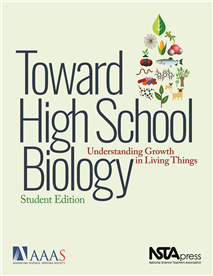 In the Student Edition, each chapter of the Toward High School Biology unit consists of carefully sequenced lessons and activities designed to draw upon students’ prior knowledge and experiences relevant to classroom activities; support students as they investigate and make sense of phenomena and models; guide students in developing, analyzing, and critiquing explanations (e.g., of a hypothetical student, of their peers, and of those of the scientific community) in light of their experiences; provide opportunities for students to apply or extend science ideas and practices to new phenomena; and help students synthesize their ideas and reflect on changes in their thinking.
In the Student Edition, each chapter of the Toward High School Biology unit consists of carefully sequenced lessons and activities designed to draw upon students’ prior knowledge and experiences relevant to classroom activities; support students as they investigate and make sense of phenomena and models; guide students in developing, analyzing, and critiquing explanations (e.g., of a hypothetical student, of their peers, and of those of the scientific community) in light of their experiences; provide opportunities for students to apply or extend science ideas and practices to new phenomena; and help students synthesize their ideas and reflect on changes in their thinking.
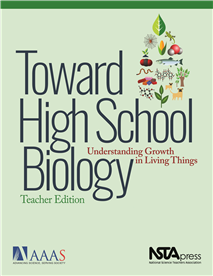 The Teacher Edition includes everything in the Student Edition, but it also is designed to provide easy access to essential background information and support needed for using the Toward High School Biology unit effectively in the classroom. Additional teacher support materials (e.g., brief video demonstrations, color images from the unit, and tutorials) are provided online. The Teacher Edition and the supplementary materials aim to provide a “big picture” sense of the unit and its goals as well as the specific information and guidance needed to teach each lesson and carry out each activity.
The Teacher Edition includes everything in the Student Edition, but it also is designed to provide easy access to essential background information and support needed for using the Toward High School Biology unit effectively in the classroom. Additional teacher support materials (e.g., brief video demonstrations, color images from the unit, and tutorials) are provided online. The Teacher Edition and the supplementary materials aim to provide a “big picture” sense of the unit and its goals as well as the specific information and guidance needed to teach each lesson and carry out each activity.
Learning theory and research-based evidence guided AAAS/Project 2061’s development of Toward High School Biology. The unit reflects the team’s understanding that students’ science conceptions develop from (a) having a wide range of experiences with the natural world that can be explained by a coherent set of ideas and (b) having an opportunity to interpret and make sense of experiences in terms of those ideas.
Moreover, student understanding of the learning goals increases when students (a) observe phenomena and representations that are explicitly targeted to the learning goals and are selected to address common student difficulties and (b) are actively engaged in interpreting the phenomena and representations in light of the learning goals and their own initial ideas.
Consistent with these views, the Toward High School Biology unit supports student learning by
- focusing on a coherent set of ideas and making the connections among those ideas clear,
- providing information about commonly held student ideas (both troublesome ideas and ideas teaching can build on) and questions to collect information about a particular group of students’ ideas and to monitor their progress,
- including a variety of relevant and engaging phenomena and representations, and
- including activities that foster students’ sense making, such as modeling tasks, to help students relate the phenomena and representations to the science ideas and to reconcile differences between their ideas and the science ideas.
With these design principles, Toward High School Biology is sure to be an effective tool for addressing specific goals for student learning.
These books are also available as e-books: Teacher Edition and Student Edition.
Would you like to challenge your middle school students to explain a range of phenomena—from how nylon thread can form from two clear, colorless liquids to how a snake that eats only eggs can make body structures that don’t look anything like an egg? Would your students enjoy building molecular models with Legos to understand how an herbicide prevents weeds from growing?
Science specialists
By Mary Bigelow
Posted on 2017-09-28
 I am K-6 science specialist in Australia. I am keen to make contact with others in this unique employment situation. I’m interested in issues such as timetabling (scheduling), support from the school, and any issues with the teachers’ union. – C., New South Wales
I am K-6 science specialist in Australia. I am keen to make contact with others in this unique employment situation. I’m interested in issues such as timetabling (scheduling), support from the school, and any issues with the teachers’ union. – C., New South Wales
Some U.S. schools have elementary science specialists. Depending on the school, these specialists can have a variety of roles: co-teacher, mentor, coach, resource coordinator, professional development. Some teach science to several classes as an elementary “special,” while the classroom teacher has a planning period and is not in the classroom. These positions are often funded by grants.
At one time, I was a K-12 technology specialist, and my school district also had a K-5 science specialist. We were both part of the bargaining unit and on the teacher salary scale (our district was unionized).
Even though we visited classrooms often, we had no supervisory or evaluative roles. We were coaches or mentors rather than administrators, and teachers were very receptive and responsive to us. If we did interact directly with students, it was a co-teaching experience to assist the teacher with a science or technology-enhanced lesson.
In terms of support, we each had “office” space to work and store materials (a corner of an unused classroom or conference room). Budget-wise we had some funds for materials and equipment, mostly from grants and federal programs in professional development or math/science/technology.
I posted your request on an NSTA Discussion Forum for input from colleagues in similar roles. (Even if you’re not an NSTA member, you can create a free account to respond to discussion posts, ask questions, or access NSTA resources through the Learning Center.)
Photo: http://www.flickr.com/photos/benwerd/329570851/
 I am K-6 science specialist in Australia. I am keen to make contact with others in this unique employment situation. I’m interested in issues such as timetabling (scheduling), support from the school, and any issues with the teachers’ union. – C., New South Wales
I am K-6 science specialist in Australia. I am keen to make contact with others in this unique employment situation. I’m interested in issues such as timetabling (scheduling), support from the school, and any issues with the teachers’ union. – C., New South Wales
Documenting science investigations in preschool: Solar eclipse and butterfly metamorphosis
By Peggy Ashbrook
Posted on 2017-09-28
Thank you to the director, Sandra Redmore, and the teachers of Clarendon Child Care Center, Andria Shelton, Barbara Foster, and Sarah Abu-El-Hawa, for sharing their teaching practices and science explorations!
Viewing a solar eclipse and watching a newly emerged butterfly use its wings are two ways young children at the Clarendon Child Care Center engaged with transformations in nature. Their experiences were not one-time events but part of on-going investigations into patterns of shadows and changes in living organisms as they grow. Documenting their experiences in the investigations revealed children’s thinking, information teachers can later use for planning future discussions and explorations.
 At the beginning of summer, the addition of a sunscreen application time reflected the longer time the children were spending outdoors enjoying, but protected from, the sun’s radiation. All summer the children tended their gardens of green beans, cucumbers, tomatoes, and milkweed. Water breaks for plants and people emphasized the seasonal changes in the needs of living organisms. Time passed quickly in play but results were not fast enough in daily hunts for “big enough” green beans and Monarch butterfly eggs.
At the beginning of summer, the addition of a sunscreen application time reflected the longer time the children were spending outdoors enjoying, but protected from, the sun’s radiation. All summer the children tended their gardens of green beans, cucumbers, tomatoes, and milkweed. Water breaks for plants and people emphasized the seasonal changes in the needs of living organisms. Time passed quickly in play but results were not fast enough in daily hunts for “big enough” green beans and Monarch butterfly eggs.
Transformation in the sun’s appearance
 Indoors the children and teachers discussed the moon blocking the sun like a shadow or a cloud overhead to prepare for viewing the solar eclipse on August 21, 2017. They played with flashlights and explored making shadows. They practiced not looking at the sun until they were wearing the glasses with solar filter lenses. Families were contacted with safety information and permission forms, and volunteers recruited for the day.
Indoors the children and teachers discussed the moon blocking the sun like a shadow or a cloud overhead to prepare for viewing the solar eclipse on August 21, 2017. They played with flashlights and explored making shadows. They practiced not looking at the sun until they were wearing the glasses with solar filter lenses. Families were contacted with safety information and permission forms, and volunteers recruited for the day.
 That afternoon, the three and four year old classes played in the large muscle (gross motor) room indoors with moon-themed centers while a few children at a time, with the direct assistance of adults, took turns viewing the solar eclipse, each spending at least five awestricken minutes outside. Originally teachers planned for the entire group to go out together and stay outside for a long period of time but researching how to make it a safe experience led them to take the children out in small groups instead, for multiple short viewings of five minutes with adults more directly supervising the children’s use of glasses. The children’s documentation shows what an impact this experience had on them.
That afternoon, the three and four year old classes played in the large muscle (gross motor) room indoors with moon-themed centers while a few children at a time, with the direct assistance of adults, took turns viewing the solar eclipse, each spending at least five awestricken minutes outside. Originally teachers planned for the entire group to go out together and stay outside for a long period of time but researching how to make it a safe experience led them to take the children out in small groups instead, for multiple short viewings of five minutes with adults more directly supervising the children’s use of glasses. The children’s documentation shows what an impact this experience had on them.
The day after the eclipse children once again (with teacher supervision) looked at the sun through the eclipse glasses with solar filter lenses and they still found it really interesting. Children and adults had been awed viewing the out-of-the-ordinary phenomenon of the solar eclipse (moon-passing-in-front-of-the-sun), but children are also awed by the recognition that a huge star beams down on us everyday. This is a rather amazing starting point for preschoolers when you think about it.
Butterfly transformation
 Even the two year old children were able to tend to Monarch caterpillars that hatched from eggs in a colleague’s garden. The classes observed food preferences, feeding and defecation, growth, movement, and metamorphosis. When the butterflies emerged from the chrysalids they were released into the school garden. This experience tied into children’s observations of the
Even the two year old children were able to tend to Monarch caterpillars that hatched from eggs in a colleague’s garden. The classes observed food preferences, feeding and defecation, growth, movement, and metamorphosis. When the butterflies emerged from the chrysalids they were released into the school garden. This experience tied into children’s observations of the  Sun and shadows because they observed the butterfly staying in the shade as its wings dried and then moving into the sun, warming up, and flying away.
Sun and shadows because they observed the butterfly staying in the shade as its wings dried and then moving into the sun, warming up, and flying away.
Incorporating the beauty and wonder of these diverse experiences in nature into investigations focused on children’s ability to make observations and think about what they see in the patterns of natural events.
Thank you to the director, Sandra Redmore, and the teachers of Clarendon Child Care Center, Andria Shelton, Barbara Foster, and Sarah Abu-El-Hawa, for sharing their teaching practices and science explorations!
Make-up work
By Mary Bigelow
Posted on 2017-09-27
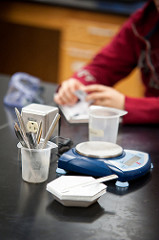 When students miss a lab activity, what are some meaningful ways they can make up the work? — R., Oregon
When students miss a lab activity, what are some meaningful ways they can make up the work? — R., Oregon
Most students don’t want to miss lab investigations, but when they do, it can affect their learning in the rest of the unit. Finding time for make-up work outside of class can be difficult in a busy schedule or for bus riders.
It’s also hard to keep equipment and supplies set up for an extended time, especially if you teach more than one subject or share the lab or equipment with other teachers.
Here are some suggestions:
- For each investigation, create an alternate assignment on the topic, such as a report or project addressing the same learning goals. (However, this would require you plan two separate activities and create rubrics and due dates for the alternate.)
- Provide a link to a virtual lab, video, or simulation on the topic. (Other students may appreciate the opportunity for the additional experience.)
- Give the student a copy of the question and have a member of the absentee’s lab team explain the investigation and share the data. The absentee would be responsible for completing the assigned report on the activity, using the data and observations to respond to the original question. Model and practice this with the students so they know what to expect if they miss a lab.
- Ask one group to take photos or a video of the activity as they do it. Post this on the class website so the absent students can follow along with the procedure, record the data, and complete the summary/report. This may sound like a lot of work, but you only need one presentation per activity. This may require some practice by the student-videographers.
Photo: https://www.flickr.com/photos/mysight/5044057510/lightbox/
 When students miss a lab activity, what are some meaningful ways they can make up the work? — R., Oregon
When students miss a lab activity, what are some meaningful ways they can make up the work? — R., Oregon
Most students don’t want to miss lab investigations, but when they do, it can affect their learning in the rest of the unit. Finding time for make-up work outside of class can be difficult in a busy schedule or for bus riders.
Seeking a New Way to Assess Science at All Levels
By Cindy Workosky
Posted on 2017-09-26
The word assessment can prompt feelings of dread, mistrust, or outright hate in many teachers. That’s distressing, as quality instruction includes quality assessment. Unfortunately, we have allowed assessment to become the “tail that wags the dog.” The development of the Next Generation Science Standards (NGSS) was a tremendous step forward in attempting to change that and recover students’ excitement and curiosity about science.
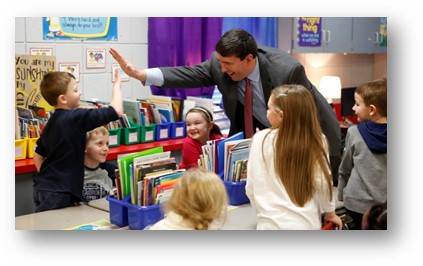 I view assessment from two perspectives. First, as leader in developing the NGSS, I know the intent of the Framework for K–12 Science Education and the lead states. Second, as Commissioner of Education for Kentucky, I am responsible for creating an environment that ensures students are receiving a quality education. While these positions give me two different lenses for viewing education, I believe that together they offer a specific way to approach three- dimensional assessment.
I view assessment from two perspectives. First, as leader in developing the NGSS, I know the intent of the Framework for K–12 Science Education and the lead states. Second, as Commissioner of Education for Kentucky, I am responsible for creating an environment that ensures students are receiving a quality education. While these positions give me two different lenses for viewing education, I believe that together they offer a specific way to approach three- dimensional assessment.
First, let’s consider the intent of the standards. I believe that traditional science testing has removed the creativity and joy from science teaching, resulting in students who fail to experience the joy of learning science and don’t develop the ability to think critically about the world around them. When we crafted the NGSS, we had a clear understanding that the standards would “break” many of the current psychometric models, including the notions that one standard equals one multiple-choice item and that we can only test content. If we approach state assessment from the standpoint intended by the states and the writers, then we must have the courage to seek a new way to approach state assessment.
So what was the standards’ intent beyond changing how we think about assessment? I think it’s important to note that the standards were not intended to focus on state assessment exclusively; they were, in fact, meant to refocus instruction. Throughout the implementation process, our most important message to states was not to proceed to assessment too quickly; instruction must come first. (Please note I have a reason for referring specifically to states, which I’ll explain shortly.)
This sequence was intentional and meant to emphasize that instruction was the critical first step, and state assessment would follow. I contend it’s time for us to realize that as educators, we must consider the business of instruction first. If we do our jobs, state assessment will take care of itself. The best test prep is good instruction, but if we focus solely on the facts of science as we have done for years, test prep will remain static. I understand that much of science assessment drives how we manage instruction. This is why states must take the development of new assessments seriously and consider the intent of the standards as they do so.
A final point is the integration of quality instruction and quality assessment. I stated earlier that state assessment follows instruction. This is true because quality instruction also requires quality assessment at all levels. In other words, as the National Research Council has noted in its consensus study on Developing Assessments for the Next Generation Science Standards, a system of assessments must be employed to properly align instruction with assessment. Indeed, students should actually learn from these assessments, as well as receive feedback on their own progress.
We have done this in Kentucky, and in the past year, I have witnessed extraordinary instruction, especially at the K–8 level. Our system of assessments consists of classroom-embedded assessments, tasks, and a state assessment. We strive to make clear that local assessments are just as important. They are not part of accountability, but they help determine whether practice changes. The feedback we have received from students shows they learned from the tasks, as did the teachers.
Assessment should not be something the state does; it should be part of a system that values teachers and their instruction, provides quality feedback to both teachers and students, and engages students in phenomena and engineering that allow them to appreciate the scientific process. I am committed to these ideas, and we will emphasize them in Kentucky, in all areas. I am also collaborating with other chief state school officers and their staff to improve science education for all students, and I am excited about our future. If we are to succeed in providing the best science education in the world, we must remember three necessary ingredients: quality instruction, quality assessment at all levels, and teachers who have the courage to instruct and assess differently.
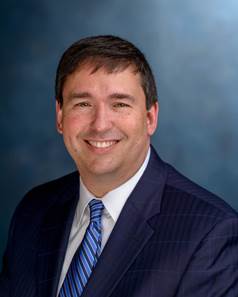
Stephen L. Pruitt
Stephen L. Pruitt is the Commissioner of Education for the state of Kentucky. He started his education career as a high school chemistry teacher in Georgia, and later held several positions at the Georgia Department of Education. Before coming to Kentucky, Commissioner Pruitt served as senior vice president for Achieve, Inc., a nonpartisan education reform organization in Washington, D.C., where he coordinated the development of the Next Generation Science Standards. He holds a bachelor’s degree in chemistry from North Georgia College and State University, a master’s degree in science education from the University of West Georgia, and a Doctorate of Philosophy in chemistry education from Auburn University.
This article was featured in the September issue of Next Gen Navigator, a monthly e-newsletter from NSTA delivering information, insights, resources, and professional learning opportunities for science educators by science educators on the Next Generation Science Standards and three-dimensional instruction. Click here to sign up to receive the Navigator every month.
Visit NSTA’s NGSS@NSTA Hub for hundreds of vetted classroom resources, professional learning opportunities, publications, ebooks and more; connect with your teacher colleagues on the NGSS listservs (members can sign up here); and join us for discussions around NGSS at an upcoming conference.
The mission of NSTA is to promote excellence and innovation in science teaching and learning for all.
Future NSTA Conferences
2017 Fall Conferences
National Conference
Follow NSTA
The word assessment can prompt feelings of dread, mistrust, or outright hate in many teachers. That’s distressing, as quality instruction includes quality assessment. Unfortunately, we have allowed assessment to become the “tail that wags the dog.” The development of the Next Generation Science Standards (NGSS) was a tremendous step forward in attempting to change that and recover students’ excitement and curiosity about science.
Next Gen Navigator
Kentucky’s Systems Approach to Assessing Three-Dimensional Standards
By Cindy Workosky
Posted on 2017-09-26
One thing is clear about our multi-dimensional standards: They require a complex and thoughtful approach to assessment. No single, conventional, summative test can be expected to provide reliable data sufficient enough to satisfy the demands of all possible audiences. To say a student truly understands all dimensions of a multi-year set of Performance Expectations (PEs) would require days of intensive assessment or a technological solution that currently exists only in science fiction. So how do we improve our ability to ascertain what students know and can do, given the limitations of the traditional summative assessment model?
The obvious answer is that we should go beyond the traditional summative assessment model. We’re not required to base our understanding of student achievement solely on a single assessment given at the end of the school year (or multiple years when grade-band testing.) To more accurately assess multi-dimensional standards, we need to employ an approach that allows us to measure student performance at different times and in different ways. Most importantly, we need to emphasize formative assessment over summative assessment, which will enable teachers to make course corrections well before the summative assessment. This requires a new way of thinking about assessment in science: a systems approach.
In the 2016–17 school year, Kentucky field-tested this new approach. In addition to new summative assessments at elementary, middle, and high school levels, we implemented formative assessments at every grade level. Called Through Course Tasks (TCTs), these assessments differed greatly from the traditional science assessment approach. They combined summative assessment for accountability with daily formative classroom assessment to create a system of science assessments.
Three Components of a Science Assessment System
Classroom-Embedded Assessments (CEAs)
Vital to any good assessment system is teachers’ daily assessment at the individual classroom level. Teachers engage students in formative assessment on a minute-by-minute basis to determine the corrections necessary to maximize each student’s learning progress. As teachers become more familiar with multi-dimensional assessment, their CEAs will become more precise in revealing deficiencies in students’ understanding of the Science and Engineering Practices (SEP) and Crosscutting Concepts (CCC), and teachers’ traditional “content” assessments may benefit as well. While the information gathered does not contribute to a student, teacher, or school score on any accountability measure, it is crucial in directing student learning.
Through Course Tasks (TCT)
TCTs are multi-dimensional tasks to help teachers learn more about their students. Specifically, the TCTs are designed to elicit evidence of student understanding of the SEP and CCC. While TCTs share some characteristics with other components of the system, they are unique because they
- are a collection of common tasks available to all K–12 teachers of science ;
- are created by teachers and shared statewide through an electronic portal;
- are accompanied by a guide explaining the task and how to facilitate it with students;
- are three-dimensional tasks, but designed to elicit evidence of student understanding of primarily SEP and CCC because they are untethered from the content of any particular Performance Expectation;
- allow students to use the SEP and CCC as tools to make sense of a phenomenon or solve a problem;
- are designed to be administered as part of a process, not just assigned to students and scored (Teachers are expected to work collaboratively to plan task administration and analyze student work to determine instructional implications.);
- aren’t part of accountability; students aren’t “scored” and their individual results aren’t reported to the state (The TCT is a formative assessment designed to provide teachers with useful instructional information and to calibrate expectations for student performance in 3-D sensemaking.); and
- are implemented by teachers two or three times per year.
State Summative Assessment (SSA)
The State Summative Assessment (SSA) piloted in spring 2017 was comprised of clusters of items requiring students to use all three dimensions to make sense of a phenomenon or solve an engineering design problem. Each cluster assessed two or three PEs and used a storyline approach to present the phenomenon or problem. The cluster established a scenario or situation in which students were asked to apply their understanding of all three dimensions. Individual items were written to work together coherently so students progressed through the questions in a logical way.
Kentucky teachers were asked to write the clusters so that every item (whether multiple-choice or extended-response) was at least two-dimensional, and that the cluster as a whole was three-dimensional. Teachers who created the clusters said constructing multi-dimensional multiple-choice items was very challenging, as was identifying a rich phenomenon to anchor the cluster.
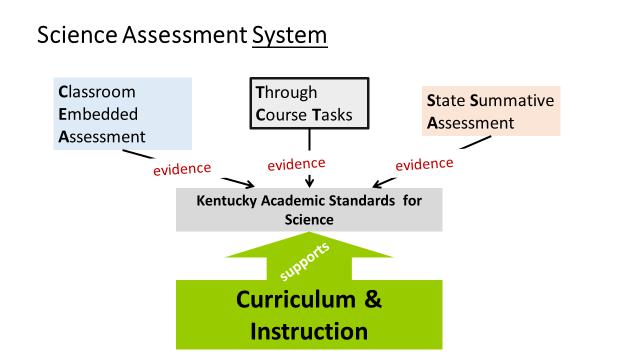
Working as a System
A collection of parts working independently of one another isn’t a system; it’s simply a collection of parts. The central idea of Kentucky’s science assessment system is that each component has a unique role in achieving the same end: providing useful information about different aspects of student learning in science. Often teachers are advised to create practice tests and to emulate summative practice at the classroom level. Unfortunately, this elicits only one kind of information, and in the case of summative assessment, only after all the opportunities for learning have ended. We hope that by providing access to quality formative assessment and freeing it from the pressures of accountability, teachers will have multiple and timely ways to learn what their students need.
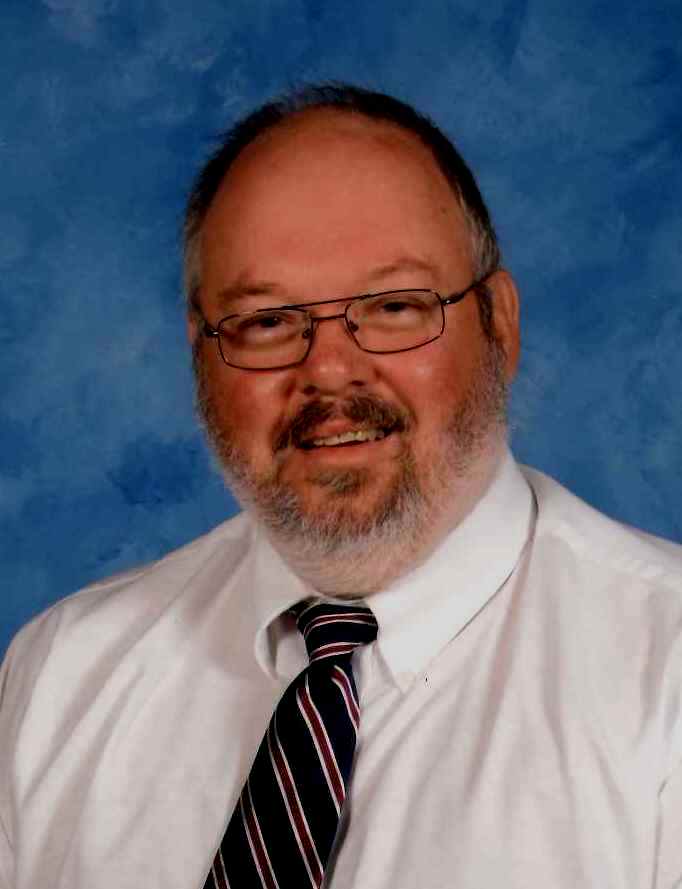
Sean Elkins
Sean Elkins is a science instructional specialist for the Kentucky Department of Education. He currently works with teachers to develop formative and summative assessments as part of Kentucky’s Science Assessment System. Elkins coordinated Kentucky’s efforts as one of the 26 states that helped create the Next Generation Science Standards. During his 29 years in public education, he has worked with students ranging from first-day kindergartners to graduating seniors. He holds certifications in Earth science, chemistry, and physics.
This article was featured in the September issue of Next Gen Navigator, a monthly e-newsletter from NSTA delivering information, insights, resources, and professional learning opportunities for science educators by science educators on the Next Generation Science Standards and three-dimensional instruction. Click here to sign up to receive the Navigator every month.
Visit NSTA’s NGSS@NSTA Hub for hundreds of vetted classroom resources, professional learning opportunities, publications, ebooks and more; connect with your teacher colleagues on the NGSS listservs (members can sign up here); and join us for discussions around NGSS at an upcoming conference.
The mission of NSTA is to promote excellence and innovation in science teaching and learning for all.
Future NSTA Conferences
2017 Fall Conferences
National Conference
Follow NSTA
One thing is clear about our multi-dimensional standards: They require a complex and thoughtful approach to assessment. No single, conventional, summative test can be expected to provide reliable data sufficient enough to satisfy the demands of all possible audiences. To say a student truly understands all dimensions of a multi-year set of Performance Expectations (PEs) would require days of intensive assessment or a technological solution that currently exists only in science fiction.
Focusing on Instruction to Improve My School
By Cindy Workosky
Posted on 2017-09-25
How do you envision science education in your classroom? Your school? Your district? In hectic life of a modern educator, it is easy to become overwhelmed by the initiatives, expectations, and pressures of our profession. As a first-year high school administrator, I admit I experienced a point last year when I was simply surviving—not managing adequately, but just barely managing.
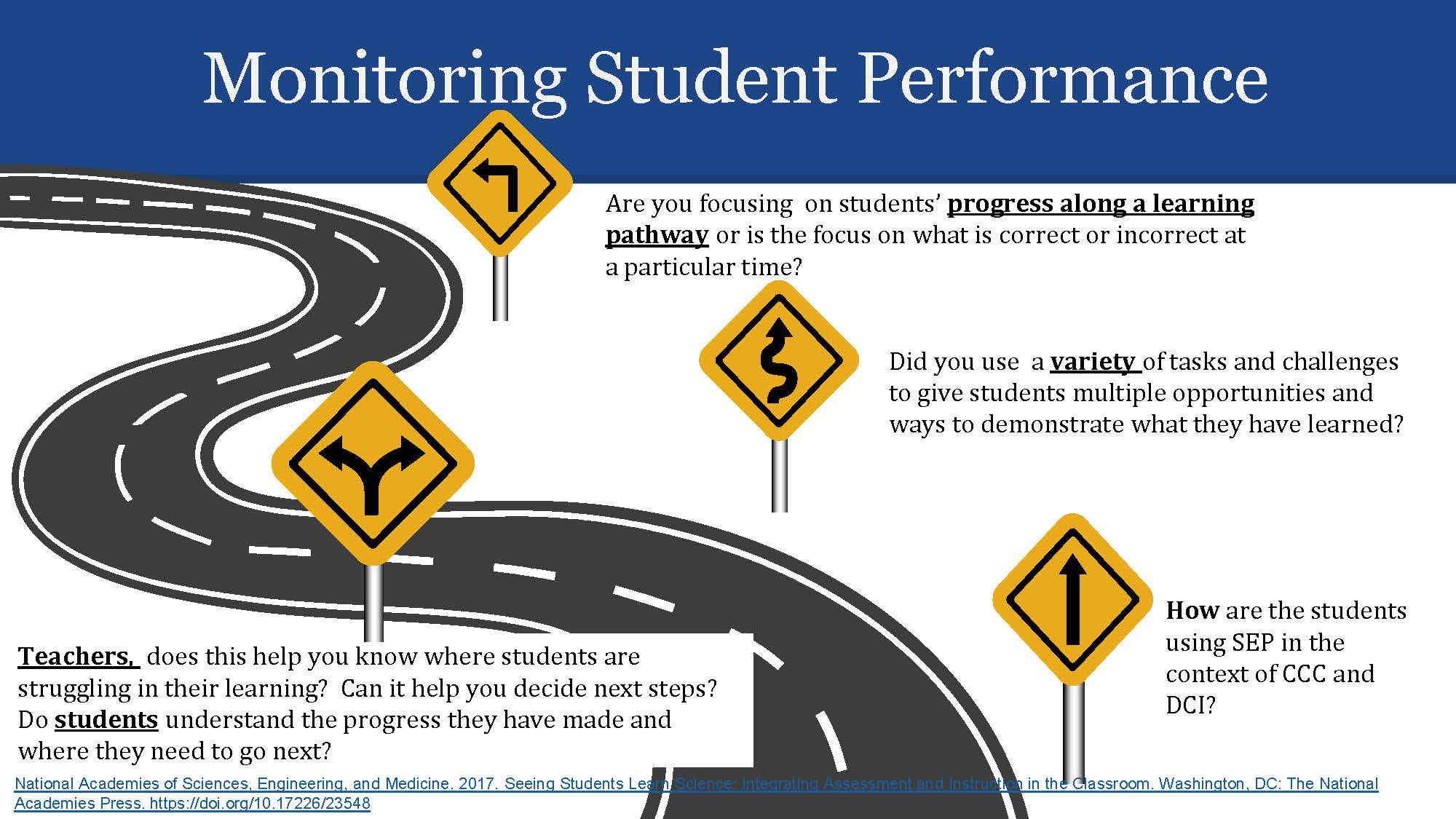 Fortunately, I was assigned a leadership coach who recognized the signs of an impending collapse. He advised me to re-center myself by focusing on the one thing that would make the biggest difference in my school and ensuring that one thing was done well and consistently. He told me if I could devote time each day to that one thing—regardless of whatever else I might face—I would know I had made a difference.
Fortunately, I was assigned a leadership coach who recognized the signs of an impending collapse. He advised me to re-center myself by focusing on the one thing that would make the biggest difference in my school and ensuring that one thing was done well and consistently. He told me if I could devote time each day to that one thing—regardless of whatever else I might face—I would know I had made a difference.
The kicker is that this “one thing” had to include something tangible, some evidence to show I was working toward my “one thing.” The one thing I chose was instruction. I want the students in my school to have the highest degree of quality instruction, consistently delivered to them. For this to happen, I had to leave my office and visit classrooms and converse with teachers about instruction. The observations I made, the feedback I gave, and the discussions I had regarding what quality instruction is, what it looks like in a particular grade level and subject, and how we could make it happen consistently, provided clear evidence that I was focusing on my “one thing.”
I want teachers in my building to have this same singular focus. The “one thing” I want them to concentrate on is teaching well every day. I want them to devote time and energy to designing challenging, engaging lessons that push their students to grow in their knowledge and understanding. I want them to start each day by reflecting on what their vision for education looks like in their classroom, and if they teach science, I want them to consider the vision set forth by the Framework for K–12 Science Education, and make that vision a reality.
While I would love to stand and say this to my faculty, I know my words would be received with skepticism at best. The truth is that we live and work in a state that still requires high-stakes assessments. The scores of those assessments are used to evaluate teachers, administrators, and schools. Those assessments aren’t perfect; everyone agrees they don’t provide a full picture of a student’s growth over a year; and they aren’t going away. So I can’t tell my teachers they don’t matter, because they do. What I can say is that how we define assessment in our school can change, and that the traditional summative end-of-year assessment isn’t the “one thing” on which we should solely focus.
This summer, I studied the recently published National Academies Press report, Seeing Students Learn Science: Integrating Instruction and Assessment. One key idea that really resonated with me is that assessment should be an integrated part of classroom instruction and not an interruption or sole event. This shift in perspective has helped me better reframe this discussion on instruction and assessment and what they should look like at my school. To accomplish this, I have restructured key ideas presented in the book to create questions that teachers can ask themselves and that I can ask during our conversations about teaching and learning. (see slide)
I would like to report that this second year has begun flawlessly and that we are consistently having rich discussions about integrating assessment into instruction. The truth is, after just more than a month into the school year, we are still taking baby steps. My teachers are still trying to grasp how to change their instruction and assessment practices, and I am still learning how to be an administrator. What we do have is a focus, a “one thing” that we believe matters most, and a belief that the little changes we make each day to accomplish that one thing will eventually result in an experience that matches the vision we have for our classrooms, our school, and our district.
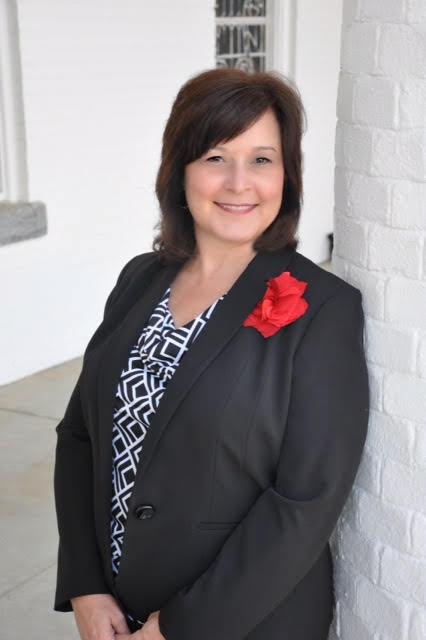
Zoe Evans
Zoe Evans is principal of Bowdon High School in Bowdon, Georgia. Before becoming an administrator in 2012, she taught middle level science for 19 years in Florida and Georgia. Evans is a National Board Certified–teacher in Early Adolescent Science and a Georgia Master Teacher. She is the 2005 Georgia recipient of the Presidential Award for Excellence in Mathematics and Science Teaching.
Evans served on the writing team for the Next Generation Science Standards (NGSS) and has collaborated on many projects, including the NGSS EQuIP Professional Learning Facilitator’s Guide, NGSS Example Bundles, and NGSS Evidence Statements. She also is an EQuIP Rubric trainer, NGSS@NSTA Curator, and NSTA’s District V Director. Evans earned a bachelor’s degree in middle grades education, a master’s degree in middle grades science, and a specialist’s degree in middle grade science from the University of West Georgia.
This article was featured in the September issue of Next Gen Navigator, a monthly e-newsletter from NSTA delivering information, insights, resources, and professional learning opportunities for science educators by science educators on the Next Generation Science Standards and three-dimensional instruction. Click here to sign up to receive the Navigator every month.
The mission of NSTA is to promote excellence and innovation in science teaching and learning for all.
Visit NSTA’s NGSS@NSTA Hub for hundreds of vetted classroom resources, professional learning opportunities, publications, ebooks and more; connect with your teacher colleagues on the NGSS listservs (members can sign up here); and join us for discussions around NGSS at an upcoming conference.
Future NSTA Conferences
2017 Fall Conferences
National Conference
How do you envision science education in your classroom? Your school? Your district? In hectic life of a modern educator, it is easy to become overwhelmed by the initiatives, expectations, and pressures of our profession. As a first-year high school administrator, I admit I experienced a point last year when I was simply surviving—not managing adequately, but just barely managing.
Ideas and inspiration from NSTA’s September 2017 K-12 journals
By Mary Bigelow
Posted on 2017-09-25
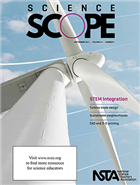
Commentary: Reasoning Versus Post-Truth in The Science Teacher is an important read in a time when dependence on unverified information from social media seems to be more prevalent than using trusted sources that value reasoning.
Science Scope – STEM Integration
From the Editor’s Desk: STEM Integration: A Tall Order: “The shift from teaching math and science in silos to intertwining them with technology and engineering makes education more relevant to students’ lives through exposure to authentic problems.”
Articles in this issue that describe lessons include a helpful sidebar (“At a Glance”) documenting the big idea, essential pre-knowledge, time, and cost. The lessons also include connections with the NGSS.
- Designing a Sustainable Neighborhood: An Interdisciplinary Project-Based Energy and Engineering Unit in the Seventh-Grade Classroom describes student collaborations in designing energy-efficient buildings. The article has examples of student work.
- Teaching Thermal Energy Concepts in a Middle School Mathematics-Infused Science Curriculum includes a 5E lesson that goes beyond traditional lab lessons by infusing math skills related to the investigation.
- Students often explore motion using toy cars and ramps. Exploring the Engineering Design Process Through Computer-Aided Design and 3-D Printing show how students can go further, designing and constructing their own cars. The 5E lesson includes a rubric.
- What happens in the schoolyard after the dismissal bell? Students investigate and submit their findings in What’s in Your School Yard? Using Citizen Science Wildlife Cameras to Conduct Authentic Scientific Investigations
- Teacher’s Toolkit: STEM Career Bingo raises students’ awareness of how STEM careers are interconnected.
- Integrating Technology: Enhancing a Scientific Inquiry Lesson Through Computer-Supported Collaborative Learning describes how students apply engineering design processes to solve a problem. The article also shows how the lesson was modified after initial implementation.
- Citizen Science: Navigate Classroom Citizen Science Throughout the School Year with Journey North incorporates technology into a study of monarch migration.
- Colleagues share their ideas and strategies in this month’s Listserv Roundup: Add More STEAM to Your Classes.
These monthly columns continue to provide background knowledge and classroom ideas:
- Scope on the Skies: Cassini’s Grand Finale
- Disequilibrium: Colorful Covalent Bonds
- Science for All: Breaking the Cycle: Thoughts About Building Grit in the Classroom
- Teacher to Teacher: Written Assessment in Three Dimensions
For more on the content that provides a context for projects and strategies described in this issue, see the SciLinks topics Biodiversity, Careers in Science, Conductors/Insulators, Covalent and Ionic Bonds, Energy Transformations, Forces and Motion, Insects, Kinetic/Potential Energy, Law of Conservation of Energy, Migration, Renewable Sources of Energy, Satellite Technology, Sound. Sustainable Development, Winds
Read more from The Science Teacher and Science & Children:
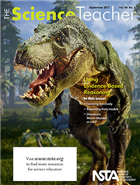 The Science Teacher – Using Evidence-Based Reasoning
The Science Teacher – Using Evidence-Based Reasoning
Editor’s Corner: Evidence-Based Reasoning: “Cable news and social media now allow us to view only the information and views that confirm our own biases, often accepted without evidence and with great confidence….Teachers—especially science teachers—are in a unique position to reaffirm the priority of facts and evidence-based reasoning.”
The lessons described in the articles include connections with the NGSS.
- Idea Bank: Setting the Stage: Your First Week of Science Class illustrates that it’s never to early in the school year to involve students in investigations (this one is about reaction times).
- The Case of Dinosaur Metabolism includes a lesson in which students research thermoregulation in dinosaurs and use a claim-evidence-reasoning process to guide their thinking. A rubric for C-E-R is included, along with examples of student work.
- The lesson described in Reasoning From Models integrates probes, physical models, simulations, and mathematical models to help students understand their learning about electric circuits.
- Modeling Periodic Patterns has ideas for repurposing an investigation of chemical reactions to include evidence-based reasoning.
- Rather than a once-and-done cookbook lab, Learning Iteratively shows how a series of activities can build on each other as students develop and refine models and reflect on their explanations.
These monthly columns continue to provide background knowledge and classroom ideas:
- Science 2.0: Enhancing Google Sheets for the Classroom
- Focus on Physics: Eight Tips for New (and not so new) Teachers
- The Green Room: Exploring Our Public Lands
- Health Wise: Be Prepared for Opioid Overdoses
- Career of the Month: Epidemiologist
- Right to the Source: A Nose for Poison Gas Saved Lives
For more on the content that provides a context for projects and strategies described in this issue, see the SciLinks topics Chemical Reactions, Circulatory System, Dinosaurs, Drugs and Drug Abuse, Electric Circuits, Electric Current, Halogens, Homeostasis, Mapping, Metabolism, Metals and Nonmetals, National Parks, Paleontology, Periodic Table, Respiratory System
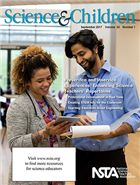 Science & Children – Preservice and Inservice Experiences: Enhancing Science Teachers’ Repertoires
Science & Children – Preservice and Inservice Experiences: Enhancing Science Teachers’ Repertoires
Editor’s Note: Learning and Teaching (and Vice Versa): “This issue includes a variety of professional development strategies used in preservice and inservice settings. Not only do they provide ways to enrich your classroom science teaching, they also provide ideas concerning how you might go about sharing your expertise with colleagues and beyond.”
The lessons described in the articles include connections with the NGSS.
- Teachers learn by observing another teacher in Professional Development in Real Time, reflecting on their own teaching, and trying new 5E lessons themselves.
- Creating STEM Kits for the Classroom describes a win-win project: Teachers design “kits” based on lessons they created. Who learned more—the designers or the students?
- Integrating Science Methods With Professional Development illustrates a “third space” methods course connecting pre-service teachers with students in a real school setting to try out their lessons.
- Instead of a set of demonstrations, try a family STEM night with the ideas in Scientists Overnight.
- The authors of Discussing Science in Professional Learning Communities share their experiences in the effective form of professional development. The article includes discussion protocols and group roles.
- Preservice early-childhood teachers help children discover What’s in Our Soil?
- Teaching Through Trade Books: The Tool and Eye includes 5E lessons that address animal adaptations.
- Engineering Encounters: Teaching Educators About Engineering describes a hands-on professional development session designed to introduce teachers to engineering at the elementary level.
These monthly columns continue to provide background knowledge and classroom ideas:
- The Poetry of Science: What Do Scientists Do?
- Science 101: Can Electromagnetic Waves Affect Emotions?
- The Early Years: Experiencing Inquiry
- Formative Assessment Probes: Uncovering Preservice Teachers’ Ideas About Magnetism and Formative Assessment
For more on the content that provides a context for projects and strategies described in this issue, see the SciLinks topics Adaptations of Animals, Decomposers, Electromagnetic Waves, Fluids and Pressure, Magnets, Rocket Technology, Roots, Seed Germination, Soil, Vibrations, Worms

Commentary: Reasoning Versus Post-Truth in The Science Teacher is an important read in a time when dependence on unverified information from social media seems to be more prevalent than using trusted sources that value reasoning.



